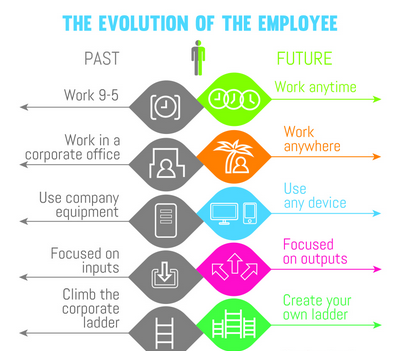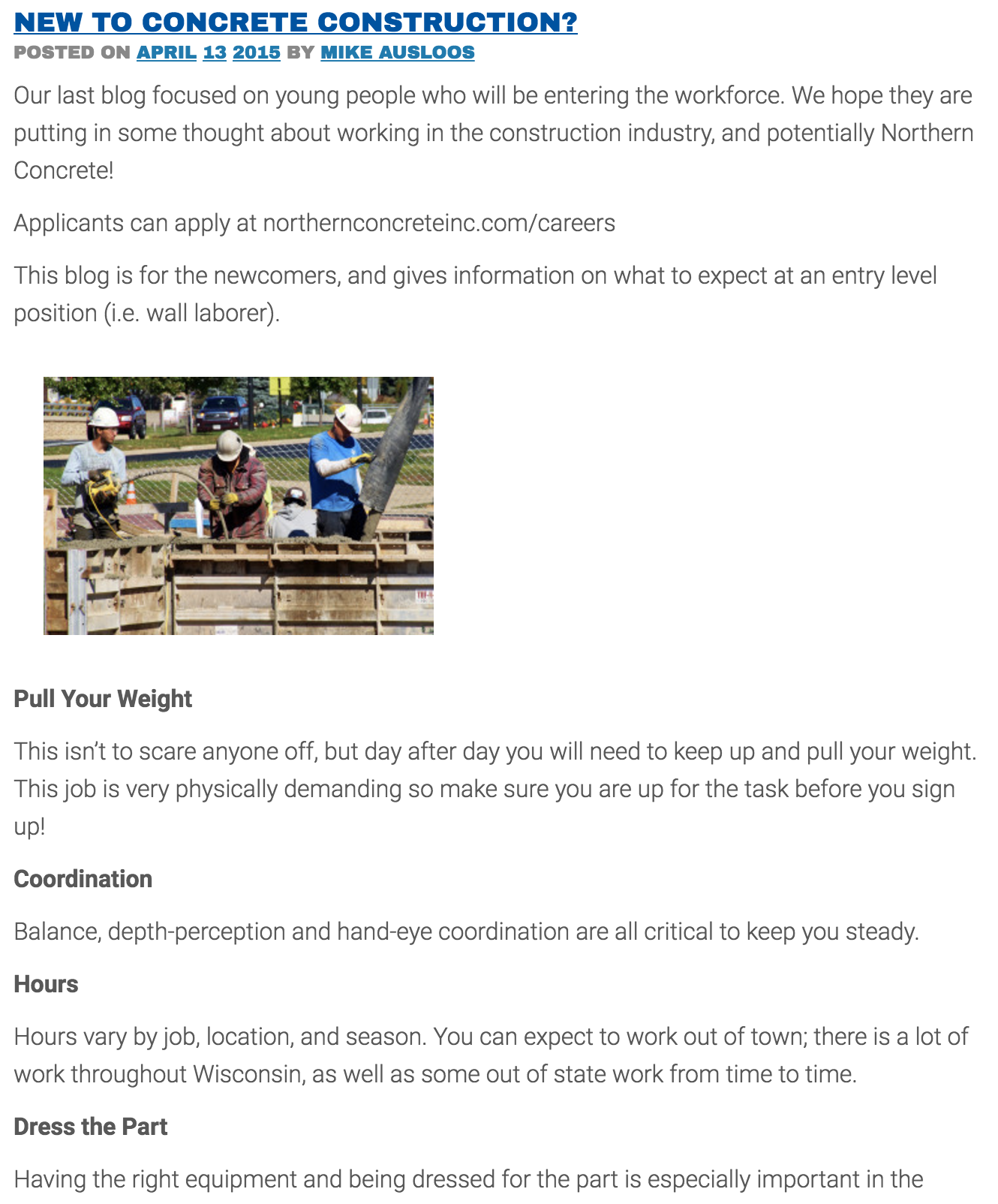Millennials in the Workforce
Millennials: we have all heard the word used in some way or another. In the workforce, it can carry a negative connotation among employers. Lazy, high maintenance, ignorant, entitled, and self-righteous are just a few of the words used to describe them. But this word carries with it another implication that the world is changing at a faster rate than ever before, driven by this generation of people who think and work differently than generations before them. Why? Because the world they grew up in witnessed unheard of technological advancements that fundamentally changed everyday life. The lasting cultural, social, and economical effects these changes brought to the world are now affecting businesses in a huge way as millennials are taking over the workforce. Employers across the country are now questioning how to handle it, because whether they like it or not, millennials will soon be our country’s new leaders.
The Millennial Challenge
Millennials are defined as anyone born roughly between 1980 and 2001. It is estimated that approximately 80 million of them have already entered the U.S. workforce. In 2014, around 36% of the workforce was made up of millennials, and it is estimated that by 2020, nearly 46% of the workforce will be comprised of this generation.[i] Millennials now comprise the largest segment of the U.S. labor market. Generation X (the generation before millennials), as well as the “Baby Boomers,” are quickly on their way out. With these numbers in mind, employers are well aware that measures need to be taken to maximize the potential of the growing number of millennials in their workplaces. However, an efficient coexistence of these two generations has proven to be a difficult task for a variety of reasons. Millennials have different work values and priorities, they define success in different ways, they use new software and technology to get projects done, and they possess unique strengths that can be difficult to harness for employers. These stark differences between the two generations have caused a friction in the workplace that has increasingly frustrated employers and stalled productivity. Simply put, employers find millennials difficult to manage.
Where do these differences come from? 
Millennials grew up in a world that gave them access to extremely advanced technology that is used for instant communication, as well as endless platforms of social media applications. Despite the fact that these technological advances have proven to greatly enhance our communication capabilities and have given us quick access to infinite information, there are negative effects that have impacted an entire generation of people. Studies have shown that social media outlets such as Facebook and Instagram, as well as something as simple as receiving a text message, are triggers for a release of dopamine in the brain similar to that of activities such as drinking alcohol or smoking. In other words, they are highly addictive media outlets and are often relied upon during times of stress or anxiety. These habits have restructured what it means to be a “friend,” and have placed less value on true, meaningful relationships. The result is isolation, hidden by a deceiving social media presence that gives the illusion of a large network of friends. This isolation is increased by a tendency for millennials to “filter” their lives through social media, providing their peers the appearance that they are happy when in fact their reality is quite the opposite. This illusion has created a habit among millennials to turn to these dopamine-releasing devices, rather than actual people, during times of stress. Their presence on social media has left this generation feeling constantly evaluated by their peers through the lens of social media. Perhaps the most concerning part of this is the lack of an age restriction on social media. Many millennials have simply never known anything different. Because of this, they typically place more value on the opinions of their peers than the opinions of their superiors. This tendency has now carried over into the workforce as millennials are taking over this space, and because they have become so accustomed to this social-media driven isolation, it is more difficult for them to trust their leadership. Making matters worse is their ability to access and research infinite information at the palm of their hand, leading them to second guess much of what they are taught by upper-management levels. The cycle of being both isolated by and addicted to their social media-induced technology has left millennials trusting there devices more than they trust real people. This disconnect is one of the largest driving forces behind employers’ difficulties managing the millennials.
Studies also show a difference in priorities among millennials when compared to their preceding generations. Those in Generation X typically have a more linear approach to their workplace priorities; they expect a managed flow of information, a strong sense of job security, income that matches their work load, and an overall structured business style. Millennials focus more on a collaborative, unstructured work environment that provides a sense of fulfillment or personal enrichment. A flexible work schedule and a healthy work-life balance are also highly prioritized among millennials. Yes, income is a top priority, but millennials also place a larger emphasis on making a real impact or doing “meaningful work” than previous generations do.[ii] While Gen X’ers focus on the task at hand and take one route to finishing the job, millennials will tend to be more outwardly focused in their approach and will be influenced by complex networks of people that include those outside of their workplace. These tendencies can have both good and bad consequences, yet the main point of contention arises from the generational gap: one generation is trying to manage another, yet the two of them differ drastically in their priorities and work strategies.
What Employers Can Do
Understanding what millennials want from their employers is the first step in combatting this generational gap issue. Diane Spiegal, CEO of a corporate training and leadership development company called The End Result, has done extensive research on this topic. She has found that millennials want the following four things from their employers:[iii]
- Coaching: Millennials want to know what is expected of them. Coaching and direction are essential to getting the most out of a millennial. This will help establish the trust between a manager and a young person in the workplace, which can be difficult to achieve as previously mentioned. One of millennials’ biggest priorities in the workforce is making a meaningful impact, so receiving regular coaching and feedback will help them understand that the work they are given is in fact important and making a difference. Simple emails, texts, or 5 minute conversations are all it takes. The more coaching they get, the more they feel valued and want to impress their leaders. Although millennials typically take a less structured approach to achieving goals, they need systematic coaching to establish what those goals should be in order to reach that sense of accomplishment that they desire. This does not mean employers should hold millennials’ hand and walk them through their job step by step, but rather set clear parameters of what their expectations are.
- Collaboration: Given millennials’ tendencies to be present on social media and constantly being evaluated by their peers, they favor collaboration and team efforts to get projects done. They place a huge value on the opinions of their peers and can be extremely productive in these team environments. Team projects can be utilized by employers to get the most out their millennial employees, yet a clear goal or expectation must be put in place in order to achieve this. A great way to facilitate this would be internal competitions among millennial employees. The competitions help younger employees innovate and collaborate to achieve optimal results. The conversations that are sparked from these competitions are then carried over into real, everyday operations, and many companies have seen great ideas generated as a result of these competitions.
- Measures: Being evaluated is something that millennials are very used to. They grew up being constantly assessed by teachers, coaches, and parents. Even through social media, millennials are used to an evaluation system by tracking how many “likes” they receive on their posts as well as the amount of “followers” they can obtain on their various applications. It is constant benchmarking, and this mindset has carried into their professional lives as well. They want to know where they stand and what their employers think of the job they’re doing. Providing these brief evaluation sessions will increase trust between a millennial and a Gen X manager, because they sense that their leaders truly care about the job that they are doing. It will also further enhance their work ethic. Employers can expect to see better results from their millennial employees if they increase and restructure their evaluation system.
- Motivation: Creating an incentive will maximize results for millennials. As mentioned before, they typically respond more efficiently when a clear goal is established, and when there is a reward for achieving this goal. As obvious as this might sound, employers often times struggle to provide these incentives and lose motivation among their millennial employees. Extra time off, lunch outings or special invites to corporate events are some common examples of incentives that can boost performance and motivation among millennial employees.
Adding to this, the millennial generation places a high value on turning colleagues into friends, and maintaining these friendships outside of the everyday workplace. Businesses can encourage this by organizing out-of-work events that focus on gathering young people in social environments. This is an extremely valuable extension of a company’s culture, which will greatly increase millennials appreciation for the company they work for. Organizing happy hours, charity events, fundraisers, and company gatherings outside of work hours will encourage young people in the workplace to form non-business related relationships. This emphasis on a fun social environment is one of the best ways to build trust with millennials and retain their talent.
Attract. Develop. Retain.
These three steps are nothing new for any employer of any industry. They are all equally important in building a strong workforce. Yet when it comes to retaining top talent, these steps can be modified to best accommodate millennials in the workplace and ensure that employers are taking the right steps to maximize their young talent. It can be difficult for a Human Resources department to adapt to the influx of millennials, yet it should be a top priority for every employer.
Attract
Using technology to attract young talent is an immense advantage for employers. Often times, companies will make videos that “walk” a prospective employee through a typical day in the office or a jobsite. This is a creative way to get millennials engaged and help them envision life at your company. Employers should emphasize a culture of openness as well as opportunity to make an immediate impact. Millennials will be attracted to companies that promote a true need for young talent, as one of their top priorities is to make a difference right away. Compensation also plays a vital role in young talent recruitment. It is estimated that the average millennial is in $20,000 of debt when graduating from college.[iv] Furthermore, most millennials also believe that they will never receive a pension or Social Security check. Offering immediate 401K eligibility will help attract more millennials to your business.

Forward thinking companies are already working hard to acknowledge, understand and educate the millennial workforce. Northern Concrete, Inc., a CFA member from Denmark, Wisconsin, offers a blog where they have spent time discussing this challenging transition at https://northernconcreteinc.com/blog/page/6/.
Develop
Efficient development of millennials will hinge on whether or not the employer is able to generate an understanding between multiple generations in the workplace. There are agencies that offer intergenerational dynamics training, which can be used to strengthen the relationship between managers and millennials as well as build trust among different business levels. Fostering this type of community-based culture will enhance production on an everyday basis. Roundtables and focus groups that encourage an understanding amongst different generations will further encourage a productive working environment and a culture of acceptance. This type of community is something that millennials will certainly appreciate, and companies will have a stronger chance of retaining this talent. Millennials also favor companies that encourage diversity and tolerance, so employers would be wise to make this a priority for their culture if they have not done so already.
Retain
Retaining young talent in today’s workforce has proven to be more difficult than ever. A large portion of millennials were first employed when the recession hit. Being the most inexperienced and youngest employees in the workplace, it was common for businesses to let this young talent go. This created distrust between the millennial generation and employers. In fact, in 2011 it was estimated the 37% of millennials did not trust big business.[v] Millennials are also the most likely generation to quit their jobs. In fact, 44% of millennials would leave their current employer in the next two years if given the choice, and that number jumps to 66% in the next four years. vi Following the recession was a trend among millennials of accepting jobs just to simply pay the bills without finding any real fulfillment, leaving this young generation unengaged and inclined to move from one job to another very quickly. This cycle continues to pose a challenge for managers to retain their best young talent. So what can employers do to combat this? Company culture should be the priority. Millennials favor companies with flexible, relaxed environments that provide opportunities for creativity and new ideas. If they feel their voice is being heard and their ideas taken into consideration, they will be more likely to stay.
The recession also resulted in many businesses de-funding their formalized training and development programs. Because of this, many young people felt untrained and unaccounted for in the office, leaving them more likely to seek other jobs. It is essential for businesses to re-implement these training, development, or coaching programs for their young talent. This is one of the best ways for retaining millennials. Another effective retention strategy is assigning millennials individual mentors that they can rely on for guidance and advice on a weekly or monthly basis. Holding on to young talent is certainly one of the biggest challenges in today’s U.S. workplace, given how common it is for young people to jump from one job to another their first several years out of college. However, if these strategies for retention are planned for and efficiently implemented, businesses will significantly increase their chances of retaining millennials.
Conclusion
The fabric of American business is drastically changing as we know it, as a new generation is beginning to take the lead. This is a national transition that no industry will be able to avoid. With drastic differences between generations driven by technological advancement and reliance, there is certainly a lot to consider. The first step will be to acknowledge that measures need to be taken to foster intergenerational understanding within the workplace. This will be the most essential step in maximizing the massive volume of new millennial employees and the unique talents they bring. Seeing beyond the generalizations that society has placed on millennials and understanding where the differences come from is a pivotal starting point for this process. Millennials pose a challenge to the workforce that it has never seen before, but if the right measures are taken to adjust and adapt, this new generation will be poised lead American business.

About the Author:
ABOUT THE AUTHOR
Tom Garvin is an Account Executive at Arthur J. Gallagher of Chicago. A.J. Gallagher is the broker for CFA’s member-only insurance program for complete and individualized business insurance lines specific to the cast-in-place concrete industry. You can reach Tom at Tom_Garvin@ajg.com or at 312-803-7386.
Sources
[i] Lynch, A. (2008). ROI on generation Y employees. Bottom Line Conversations, LLC. Retrieved from
http://www.knoxvillechamber.com/pdf/workforce/ROIonGenYWhitePaper.pdf
[ii] Nekuda, J. (2011, August 11). What Millennials want. Human Capital Lab. Retrieved from
[iii] Spiegal, D. (2011, July 20). Why hiring Millennials is good for your business. Open Forum. Retrieved from
http://www.openforum.com/articles/why-hiring-millennials-is-good-for-your-business
[iv] Brack, J. (2012) Maximizing Millennials in the Workplace. Retrieved from https://www.kenan-flagler.unc.edu/executive-development/custom-programs/~/media/DF1C11C056874DDA8097271A1ED48662.ashx
[v] Randall, S. (2011). Millennial generation today. SBR Consulting. Charlotte: NC. [vi] Why Millennials Have No Problem Quitting Their Jobs (2016, January). Retrieved from http://fortune.com/2016/01/29/millennials-quit-jobs/






